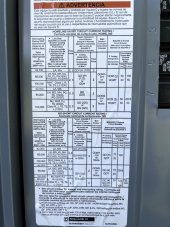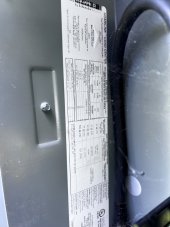jarred125
New Member
- Joined
- Jul 16, 2021
- Messages
- 116
So here is my dilemma.
Due to my noobness (I knew this would come, so I am not surprised, just a hurdle) I went into this thinking my system would be a good fit for my home. It's an 8.9kW system (for now) with room for a little more gain from the bifacial panels. This means that I will need more than 40A in order to back feed (and going larger would require more than that), so I am over the 120% rule on my bus bar (200A) service panel.
Duke Energy says no to line (supply) side taps, which would have solved this for me.
So currently I am weighing my options of the Sol Ark 15K as it has a 200A main with pass through to feed my other sub panels. What I love about this is now I have battery options out the wazoo (which I DID plan to do and would require replacing my Growatt inverter anyways), what I do not like is the cost increase.
So what other options do I have? I have looked into "solar ready" service panels, but a) they are nowhere in stock and b) are 1K or more when they do come in stock (vs the normal price they should be).
If you were in my shoes, what would your direction be?
Due to my noobness (I knew this would come, so I am not surprised, just a hurdle) I went into this thinking my system would be a good fit for my home. It's an 8.9kW system (for now) with room for a little more gain from the bifacial panels. This means that I will need more than 40A in order to back feed (and going larger would require more than that), so I am over the 120% rule on my bus bar (200A) service panel.
Duke Energy says no to line (supply) side taps, which would have solved this for me.
So currently I am weighing my options of the Sol Ark 15K as it has a 200A main with pass through to feed my other sub panels. What I love about this is now I have battery options out the wazoo (which I DID plan to do and would require replacing my Growatt inverter anyways), what I do not like is the cost increase.
So what other options do I have? I have looked into "solar ready" service panels, but a) they are nowhere in stock and b) are 1K or more when they do come in stock (vs the normal price they should be).
If you were in my shoes, what would your direction be?




